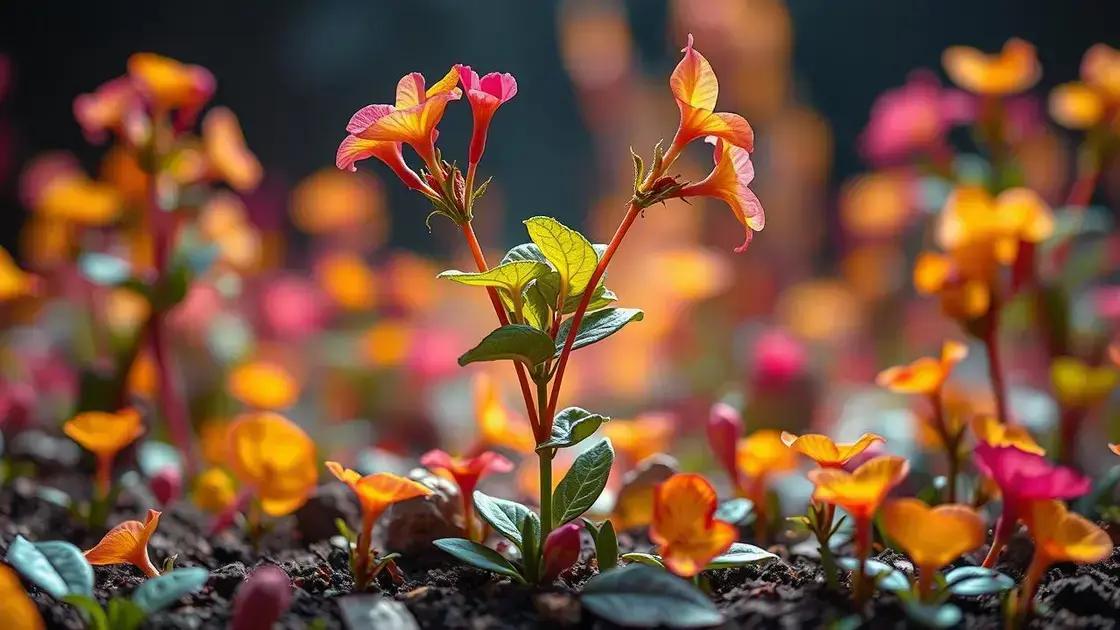How to Care for a Primrose Plant: Essential Tips for Vibrant Blooms
How to care for a primrose plant might seem daunting, but with the right knowledge, it can be a fulfilling endeavor. Discover the essential tips and information that can transform your gardening experience, ensuring your primroses thrive and flourish. Whether you’re a beginner or looking to refine your skills, this guide will illuminate your path to successful primrose care.
Table of Contents
ToggleOptimal sunlight exposure for primrose plants
Optimal sunlight exposure for primrose plants is crucial for their growth and vibrant blooms. These charming flowers thrive in a specific range of light conditions that mimic their natural habitat.
Understanding primrose light requirements
- Primrose plants generally prefer bright, indirect sunlight.
- Direct sunlight can cause leaf scorch and prevent proper blooming.
- Too little light can result in leggy growth and fewer flowers.
Identifying the right location
Place primroses in areas where they can receive:
- Filtered sunlight, such as near a window with sheer curtains.
- Morning sun exposure, which is gentle and beneficial.
- A shaded spot during the hot afternoon hours.
Seasonal light changes
Be aware of how seasons affect light intensity and duration:
- In winter, consider moving pots closer to windows as natural light decreases.
- In summer, ensure they are not exposed to harsh midday sun.
Signs of incorrect light exposure
Monitor your primrose for indications of light issues:
- Yellowing leaves typically signify excess light or burning.
- Wilting or drooping plants can indicate insufficient sunlight.
Select the right conditions for your primrose to flourish. You can connect more with gardening trends and techniques by exploring indoor gardening techniques.
How to effectively water primrose flowers

How to effectively water primrose flowers is essential for their health and beauty. Proper watering techniques can significantly impact their growth and blooming.
Understanding primrose watering needs
- Primroses prefer consistently moist soil, but not soggy conditions.
- Watering frequency can vary based on the season and environment.
- Always check the topsoil before watering; if it’s dry about an inch down, it’s time to water.
Best watering techniques
Here are effective methods for watering your primrose:
- Use room temperature water to avoid shocking the plant.
- Water at the base of the plant to keep leaves dry and reduce disease risk.
- Consider using a moisture meter for accurate readings.
Signs of overwatering or underwatering
Be vigilant for these symptoms:
- Overwatered primroses may develop yellowing leaves and root rot.
- Underwatered plants might show wilting or drooping leaves.
Creating a watering schedule
Follow these guidelines to maintain a consistent watering schedule:
- During spring and summer, water more frequently as primroses grow actively.
- In fall and winter, reduce watering as plants enter dormancy.
Effective watering not only keeps primrose flowers thriving but also enhances their vibrant colors. Consider improving your gardening skills by exploring indoor gardening techniques.
Best soil and nutrients for lush primrose growth
Best soil and nutrients for lush primrose growth play a crucial role in cultivating healthy plants. The right growing medium provides essential support for primroses to thrive.
Choosing the ideal soil mix
- Primroses thrive in a well-draining, rich potting mix.
- A mixture of peat moss, perlite, and compost is highly recommended.
- Avoid heavy garden soil, which can retain too much moisture.
Essential nutrients for primrose health
To promote lush growth, consider these vital nutrients:
- Nitrogen: Supports leafy growth and overall plant vigor.
- Phosphorus: Encourages strong root development and vibrant blooms.
- Potassium: Aids in plant health and pest resistance.
Organic amendments and fertilizers
Using organic materials can enhance soil quality:
- Compost: Improves soil structure and provides essential nutrients.
- Organic fertilizers: Choose balanced nutrients with an NPK ratio like 10-10-10.
Feeding schedule and application tips
Follow these steps for optimal nutrient application:
- Fertilize every 4-6 weeks during the growing season.
- Apply nutrients in liquid form or granules at the soil base.
- Always water after fertilizing to aid absorption.
Investing in the best soil and nutrients ensures your primrose flowers will thrive. For additional tips and trends in gardening, check out exploring indoor gardening techniques.
In conclusion
Caring for primrose plants requires attention to several essential factors, including optimal sunlight, effective watering, and the best soil and nutrients. By understanding these elements, you can ensure your primroses thrive and bloom vibrantly. Keep in mind the importance of observing your plants for signs of stress and adjusting their care accordingly. With the right techniques, your indoor garden can flourish beautifully. For more tips on enhancing your indoor garden, visit tips on enhancing your indoor garden.

